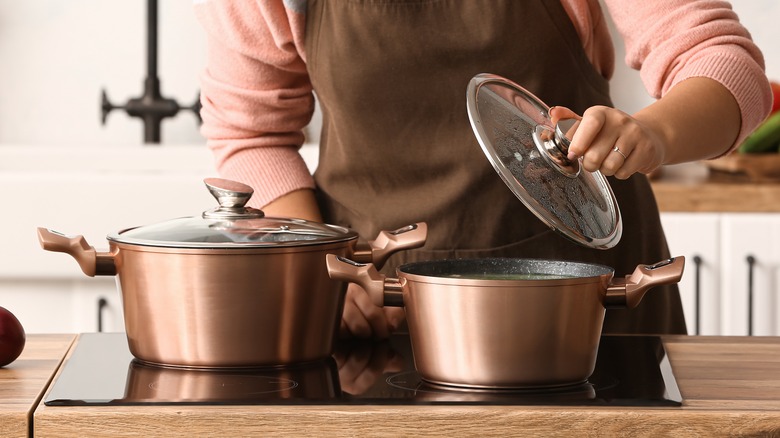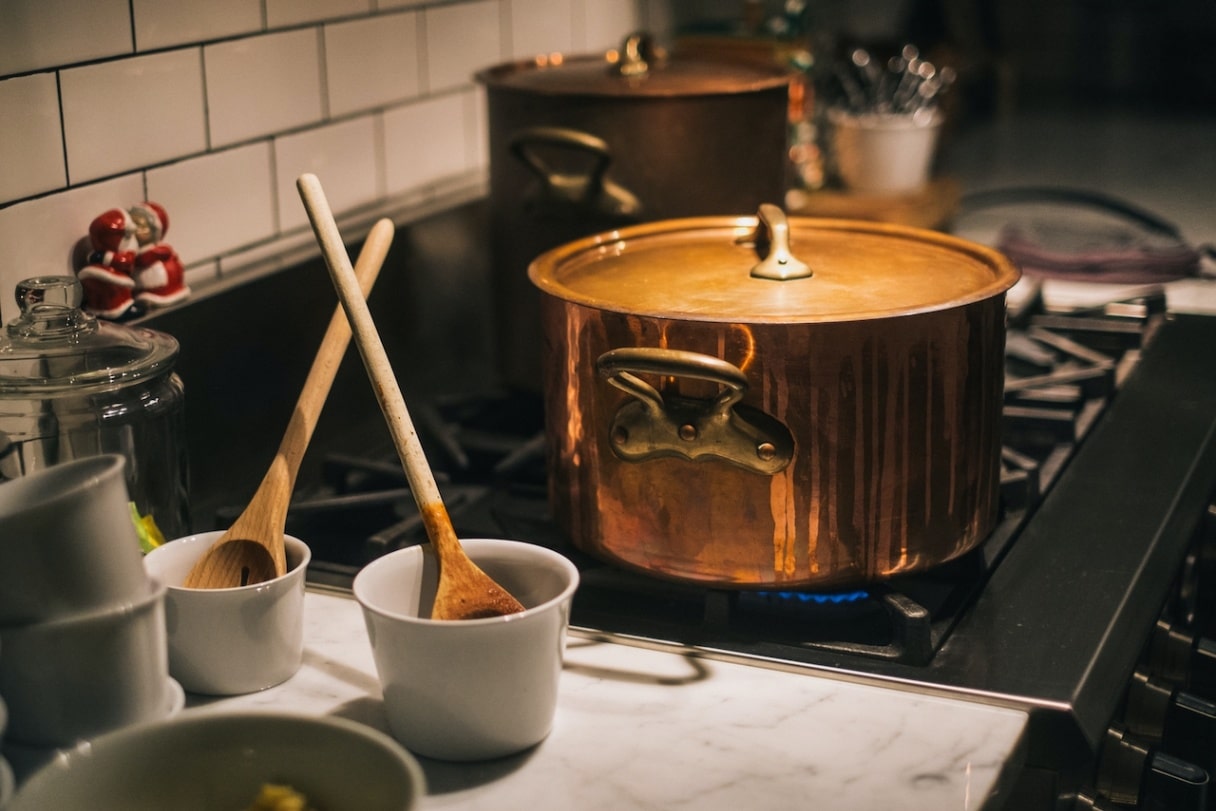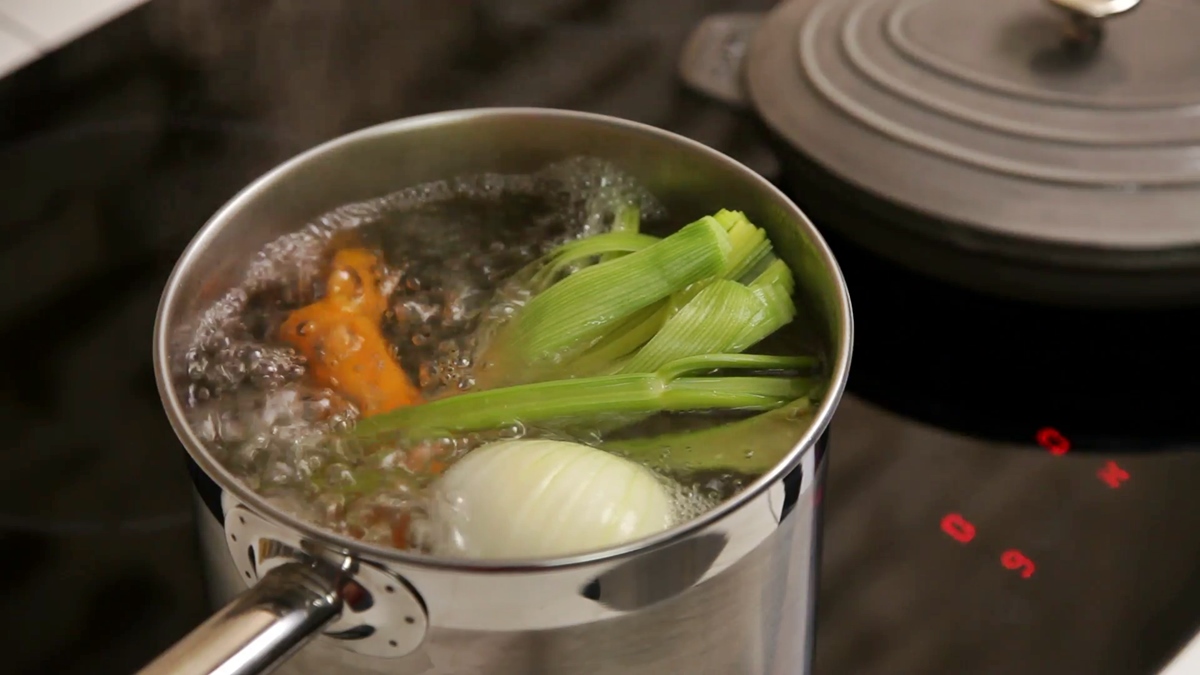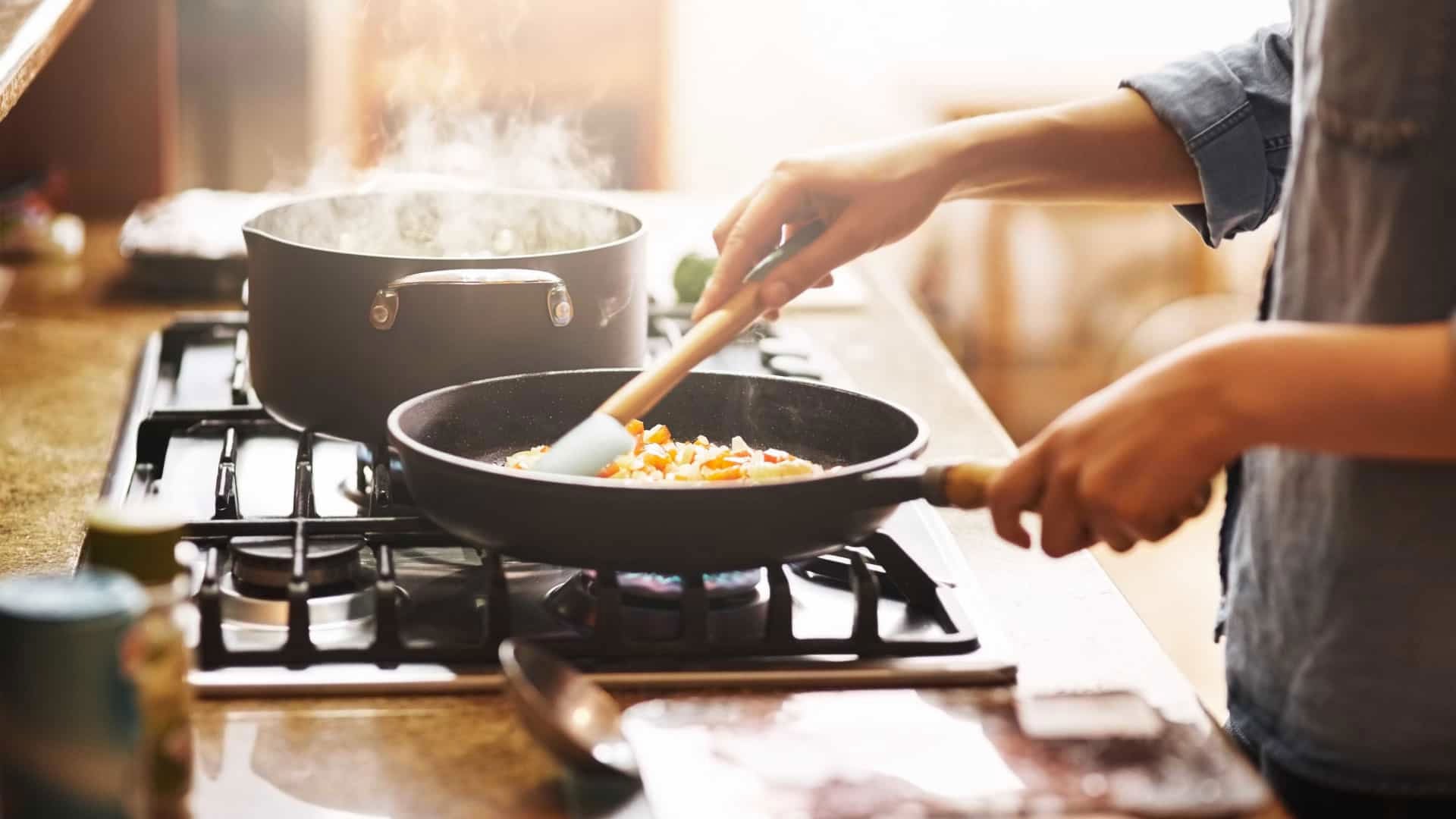When it comes to cooking, efficiency is key. We all want our meals to be ready as quickly as possible without sacrificing taste or quality. One common debate in the culinary world is whether food cooks faster when covered or uncovered. In this comprehensive guide, we’ll delve into the science behind cooking with and without lids, explore the advantages and disadvantages of each method, and provide practical tips for achieving optimal cooking results.
The Science Behind Cooking

Heat Transfer Mechanisms
- Conduction: This process involves the direct transfer of heat from a heat source to the surface of the food. For example, when you place a pot on a hot stove burner, heat is conducted from the burner to the bottom of the pot, gradually heating the food inside.
- Convection: Convection occurs when heat is transferred through the movement of hot air or liquid around the food. In an oven, for instance, hot air circulates around the food, transferring heat and ensuring even cooking.
- Radiation: Radiation involves the emission of heat energy from a heat source, such as an oven’s heating element or a grill’s flames. This radiant heat directly affects the surface of the food, contributing to browning and caramelization.
Evaporation and Moisture Loss
Evaporation plays a crucial role in cooking, particularly in processes like boiling, steaming, and sautéing. As liquids heat up, water molecules gain energy and transition from a liquid to a gaseous state, forming steam. This evaporation process carries away heat energy from the food, cooling it down and contributing to its overall cooking time.
However, while some degree of evaporation is desirable for certain cooking methods, excessive moisture loss can lead to dry, overcooked, or toughened food. Therefore, controlling evaporation rates is essential for achieving the desired texture and flavor in cooked dishes.
The Impact of Covering and Uncovering
- Covered Cooking: When food is covered, the lid traps steam and heat within the cooking vessel, creating a controlled environment conducive to efficient heat transfer and moisture retention. This method accelerates cooking by harnessing the energy contained in the trapped steam, resulting in faster overall cooking times.
- Uncovered Cooking: Cooking without a lid allows for greater evaporation, which can lead to faster moisture loss and more rapid cooking, particularly in methods like roasting, grilling, and frying. Additionally, uncovered cooking promotes the browning and caramelization of food surfaces, enhancing flavor and texture.
Application in Culinary Techniques
- Braising: In braising, covering the cooking vessel helps retain moisture and promotes tenderization by allowing the food to cook slowly in its juices.
- Sautéing: Uncovering the pan during sautéing allows for rapid evaporation of moisture, resulting in quick browning and caramelization of ingredients.
- Steaming: Covering the steaming basket traps steam, facilitating the gentle cooking of vegetables and preserving their vibrant colors and nutrients.
Covered Cooking: The Pros and Cons

Pros:
- Retention of Moisture: One of the primary benefits of covering food is the retention of moisture. When food is covered, the steam generated during cooking is trapped within the cooking vessel. This trapped steam keeps the food moist and prevents it from drying out, resulting in dishes that are tender and succulent.
- Even Cooking: Another advantage of covering food is that it promotes even cooking. The trapped steam helps distribute heat evenly throughout the cooking vessel, ensuring that all parts of the food are exposed to consistent temperatures. This can help prevent overcooking or undercooking of certain areas and result in dishes that are uniformly cooked.
- Faster Cooking: Covering food can also accelerate the cooking process. By trapping heat and moisture within the cooking vessel, covered cooking creates a more efficient cooking environment. This can lead to faster overall cooking times, allowing dishes to be prepared more quickly.
Cons:
- Limited Browning: While covered cooking helps retain moisture, it can also inhibit the browning and caramelization of food. Browning reactions, such as the Maillard reaction, occur more slowly in a moist environment. As a result, covered cooking may produce dishes that are pale in color and lack the rich, complex flavors associated with browning.
- Condensation: Another downside of covered cooking is the potential for condensation to form on the underside of the lid. As steam rises and comes into contact with the cooler lid, it can condense back into liquid droplets. These droplets may then drip back onto the food, diluting its flavors and affecting its texture.
- Steamed vs. Roasted Texture: Depending on the cooking method and recipe, covered cooking may result in a different texture compared to uncovered cooking. For example, vegetables cooked covered may have a softer, more steamed texture, while those cooked uncovered may develop a firmer, more roasted texture.
Uncovered Cooking: The Pros and Cons

Pros:
- Enhanced Browning: Cooking food uncovered allows for greater evaporation of moisture, which promotes browning and caramelization. Browning reactions, such as the Maillard reaction, occur more readily in a dry environment, resulting in dishes with rich, complex flavors and appealing golden-brown exteriors.
- Control Over Texture: Uncovered cooking gives the cook greater control over the texture of the food. Without a lid to trap moisture, ingredients can develop a crispier exterior and a firmer texture. This can be particularly desirable for dishes like roasted vegetables, seared meats, and pan-fried foods.
- Faster Evaporation: Uncovered cooking facilitates faster evaporation of moisture, which can lead to shorter cooking times for certain dishes. This can be advantageous when preparing foods that benefit from rapid browning and caramelization, such as stir-fries and grilled meats.
Cons:
- Moisture Loss: One of the main drawbacks of uncovered cooking is the potential for excessive moisture loss. Without a lid to trap steam, ingredients can become dry and tough, especially lean cuts of meat and delicate vegetables. This can result in dishes that are less tender and succulent than those cooked covered.
- Uneven Cooking: In some cases, uncovered cooking may result in uneven cooking, particularly for larger or thicker cuts of meat. The exterior of the food may cook more quickly than the interior, leading to a discrepancy in doneness levels. To mitigate this risk, it may be necessary to adjust cooking times or methods accordingly.
- Splattering and Mess: Cooking food uncovered can also lead to splattering and mess, especially when using high heat or cooking methods that involve oil or fat. Splattering can not only create a mess on the stovetop and surrounding surfaces but also pose a safety hazard if hot oil comes into contact with skin.
Practical Tips for Cooking Efficiency

For Covered Cooking:
- Choose the Right Lid: Ensure that the lid you use fits snugly on the cooking vessel to effectively trap heat and moisture. A well-fitting lid will create a sealed environment, maximizing the efficiency of covered cooking.
- Monitor Moisture Levels: Periodically check the food during cooking to assess moisture levels. If condensation accumulates on the underside of the lid or if the food appears too dry, adjust the cooking temperature or add additional liquid as needed to maintain optimal moisture levels.
- Use Thicker Lids: Thicker lids can help retain heat more effectively than thinner lids, resulting in more efficient covered cooking. When possible, opt for cooking vessels with thicker lids or consider using a double-layered lid to enhance heat retention.
For Uncovered Cooking:
- Adjust Heat Levels: Because uncovered cooking allows for faster evaporation of moisture, it may be necessary to adjust the heat levels accordingly. Start with a higher heat setting to promote browning and caramelization, then reduce the heat as needed to prevent burning or overcooking.
- Use a Splatter Screen: To minimize mess and splattering, especially when cooking with oil or fat, consider using a splatter screen. This mesh screen fits over the top of the cooking vessel and helps contain splatters while still allowing steam to escape.
- Rotate and Flip Ingredients: To ensure even cooking and browning, periodically rotate or flip ingredients during cooking. This helps promote uniform heat distribution and prevents any single side from becoming overly browned or crispy.
General Cooking Efficiency Tips:
- Preheat Cooking Vessels: Preheating pots, pans, and cooking vessels before adding ingredients can help accelerate the cooking process and ensure more consistent results. Preheating also reduces the risk of food sticking to the cooking surface.
- Use Energy-Efficient Appliances: When possible, choose energy-efficient appliances that are designed to minimize energy consumption during cooking. Look for features like induction cooking, which uses electromagnetic energy to heat pots and pans directly.
- Practice Batch Cooking: Batch cooking involves preparing large quantities of food at once and storing leftovers for future meals. This not only saves time and energy but also reduces food waste by utilizing ingredients efficiently.
Conclusion
Whether food cooks faster covered or uncovered depends on various factors, including the type of dish being prepared, desired outcomes, and personal preferences. Both methods offer distinct advantages and disadvantages, and the optimal approach may vary depending on the specific recipe and cooking technique. By understanding the science behind cooking and implementing practical tips, home cooks can achieve efficient and delicious results, regardless of whether they choose to cover or uncover their food during the cooking process.

